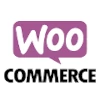
The article was published on Äripää online on 10 October 2018
It is important to map out your goals, invest enough time and competence in the development of the e-store, and involve the right partner to realize your expectations. How to create a successful e-business.
Aldar Reinberk, digital strategist of Acty OÜ, a consulting and IT development company focused on e-commerce, talks about how to create a successful e-business.
The rule “if you build it they will come” does not apply in e-commerce, although it may have seemed that way ten years ago. Back then, the barrier to entry in e-commerce was much lower, and the mere readiness of a technical solution was enough, because there was less noise and it was easier to stand out. Today, the number of success factors is much larger: an e-shop does not consist only of a platform, but is a set of business processes and activities, of which the platform is only one part.
A small e-shop can really be opened in 1-2 hours using, for example, SaaS cloud services. But depending on your goals, opportunity and business model, you may need to invest tens of thousands in software alone.
Don’t start creating an e-shop from the platform selection
A start-up e-merchant must carefully consider the size of its total investment and the time resources and competence within the company. You need a budget for marketing and human resources who have enough time and competence to deal with the development of the e-store and daily administration. Many services can be outsourced, but in this case, a very good level of field knowledge, project management and metrics system must be ensured within the company.
First, think about your business model; what is the complexity or uniqueness of your business, does the business model also require a completely different approach than usual on the web, or is it more similar to normal e-commerce business models? For example, there are completely different requirements for in-stock retail and wholesale software (B2C+B2B) versus dealing with a branded product in some narrow niche, where all production and physical distribution is organized by procurement partners. Next, you should think about what stage of development the company is in and whether it is a market leader, innovator or laggard, because it also depends on what the customers’ expectations are for your company’s e-channels and the company’s ability to meet these expectations.
Customers are lazy and picky and love themselves. If you don’t provide them with a great or at least a good customer experience and ease of use, they will take their money elsewhere.
Who are your customers and what is important to them when making a purchase decision? It is very important to understand the consumption habits and expectations of potential customers and to consider how both the product and the product information should reach those customers. Map the best marketing channels to capture the target group and explain which marketing tools you should use. Don’t forget that marketing is the first important success factor in e-commerce!
In no case should you underestimate the customer experience and usability of an e-store, because customers are lazy and picky and love themselves. If you don’t provide them with a great or at least a good customer experience and ease of use, they will take their money elsewhere.
The Client expects a good shopping experience, engagement, convenience, speed, and clarity.
Also take into account the future in the perspective of 3-5 years. If you are already aware of how your business will change during this time, it is also worth considering these changes when planning developments.
• Where does the product information that needs to be displayed in the e-shop come from? Depending on the number of products, the articulation of the information, the quality and content of the source material and the number of target groups/markets, it depends on whether you need helpful tools to enrich the product information.
• Does the journey of the physical product to the consumer start from your warehouse or the supplier’s warehouse and how long does it take? Does the e-store’s information system have to support a logistic chain, for example, a product intermediate warehouse for completing orders?
• What are the key touch points in the supply chain for both e-store employees and customers? The support processes that the technical platform of the e-shop should provide depend on these touch points.
• Carefully consider your pricing policy. How often and with what complexity will there be different price campaigns? Do the prices of the products have to be personalized on a customer-by-customer basis, by customer group, or instead be based on such events as a birthday, the total amount of purchases in a period, etc.?
• What is your customer’s journey when they come into contact with your business, taking into account all the touch points on this journey, from the e-store and advertising channels to customer support? Try to design an ideal journey from creating awareness (for example through online advertising) to purchase and beyond. And consider which touch points require software support.
• Try to consider how the different components of the supply chain could/should be integrated, to ensure the automatic movement and storage of information, so that you can reduce manual work and make informed management decisions based on the collected information.
If you are left with the answers to the above questions, it is worth turning to a consulting company that is very familiar with the subject of e-commerce, because a thorough analysis and correctly set goals will help to avoid excessive expenses in the later development phase. However, you must not leave the project to the development partner to do alone, because even in the case of a turnkey solution, it is your business! Ensure that you are clear about the basic principles of e-commerce and be actively involved in the progress of the project, because your input is valuable. In this way you will be able to clarify the development partner’s ability to deliver a high-quality final solution already in the early phase of the development project. And at the same time, it is more motivating for the developer if the customer is actively engaged and invested in the project.
Which platform is suitable for my store?
If you have previously mapped the needs of your business, you will already have a clearer understanding of the requirements for the e-store: what the functionality, interfaces, visuals, load tolerance and security of the e-store must be. Based on this information, it is already possible to start choosing an e-shop software platform.
Since the situations of companies starting e-commerce can be very different, it is unfortunately difficult to give precise recommendations for choosing a platform without getting to know the company more closely. For example, if you plan to sell five products to one market, your platform requirements will be different than a company that sells products in five colors and six sizes to four different markets. To do this, you need to be able to forecast how many visits there will be, whether there are quick discounts and flash campaigns planned, and what kind of burden they may entail.
What makes an e-shop successful?
First, the e-shop must sell a product or service that customers actually need and for which they are ready to pay. In addition, it requires excellent customer experience, ease of use, comprehensibility and effective marketing. Also, the ability to maintain customer relations and increase customer loyalty is necessary. Unfortunately, the first-time e-merchant tends to underestimate customer loyalty and engagement, as the contact with the customer seems anonymous. In fact, the customer feels the shopping experience in person, even if they want to remain anonymous online.
The personalization of the customer experience and the use of automated marketing tools are becoming increasingly crucial, which help maintain customer engagement, anticipate their wishes and offer a harmonized customer experience across all channels. This, in turn, also changes expectations for e-commerce and PIM (product information management) platforms, which play a significant role in facilitating product sales across various channels, making the traditional e-shop just one of several sales channels.
Increasing competition in e-commerce is also forcing larger e-merchants to think more about automating the entire supply chain and to use more and more predictive analytics in supply chain planning. It is not far-fetched to imagine a future where fully automated e-commerce businesses emerge, with merchants being more of a monitor and where both 3D printers and “last mile” parcel robots are used. But for this to be achieved, it will require further infrastructure development over time.







